Dinner at bedtime and pastries for breakfast–the Madrid way of eating is a bit of a culture shock to those who like eggs and bacon in the morning and dinner by 6pm. I spent just under a week in Madrid, my first time in Spain, which gave me a great chance to explore the city and the food culture by wandering and through guided tours. It is truly a remarkable city, at least for somebody like me who has lived in Perth since birth. There are people crowding the bars and ordering their beers and wines until the early morning, even during the week, and the streets during the days are so crammed with people that it’s a set of strobe lights short of a nightclub. And the food…the food can be amazing! Of course there are some dodgy places (we ended up at a few), but with a little insight it is not at all difficult to find a great place to eat.
The day starts with breakfast in Spain, although a little different from the typical Australian breakfast. A sweet pastry of some sort and a cafe con leche, or a coffee with milk, is a great way to start the day. Without milk it takes on the name cafe solo, quite literally meaning “coffee only”. I wasn’t going to do the Australian thing and go looking for a bar (a “bar” in Spain is a bit different to a bar in Australia, to which people usually go just for a drink) that serves scrambled eggs on toast or oats with honey, so I joined the crowd and enjoyed many a croissant and churro with either sugar or chocolate (or both, sometimes).
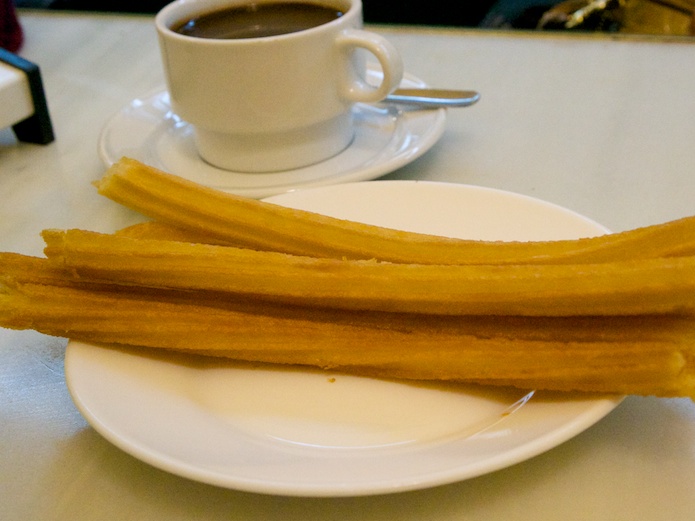
Churros in the early morning
Lunch isn’t typically eaten until later in the afternoon, at around 2pm or 3pm (people will eat a snack in between breakfast and lunch), but it is usually the largest meal of the day. In fact, scattered across the city are restaurants offering their menu del dia, or menu of the day. The restaurant will serve a set menu (sometimes with options) for a very low price, typically between 15 and 20 Euros. It is actually a great way to eat on the cheap (although there are cheaper ways of eating for those looking to really eat on a budget, like buying a jamón bread roll or having a tapa or two). For example, in a quiet street in the southern parts of the city on Calle de la Cabeza is La Otra Casa, a quaint little restaurant offering a small but interesting menu.
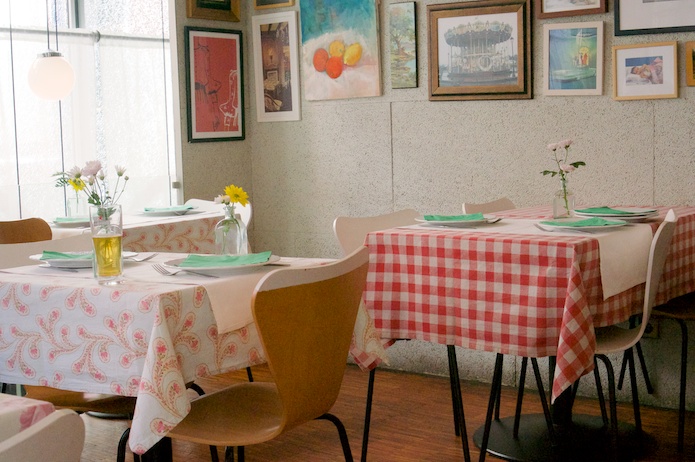
The table setting at La Oltra Casa
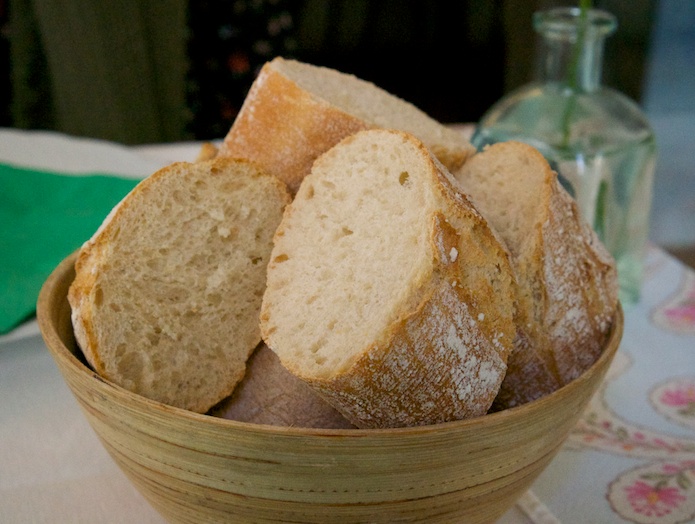
Complementary bread
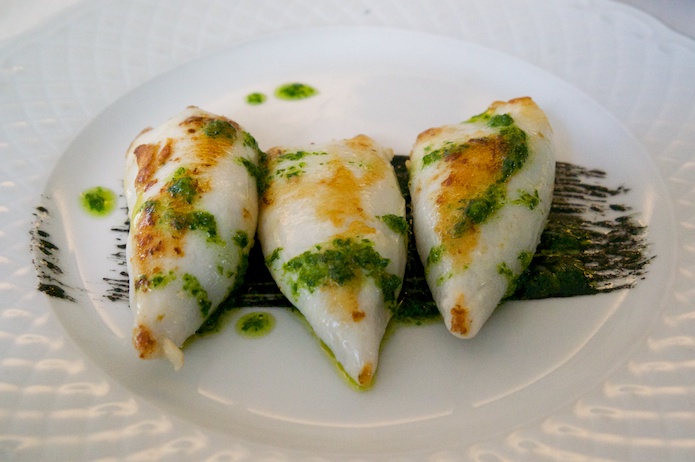
Stuffed squid
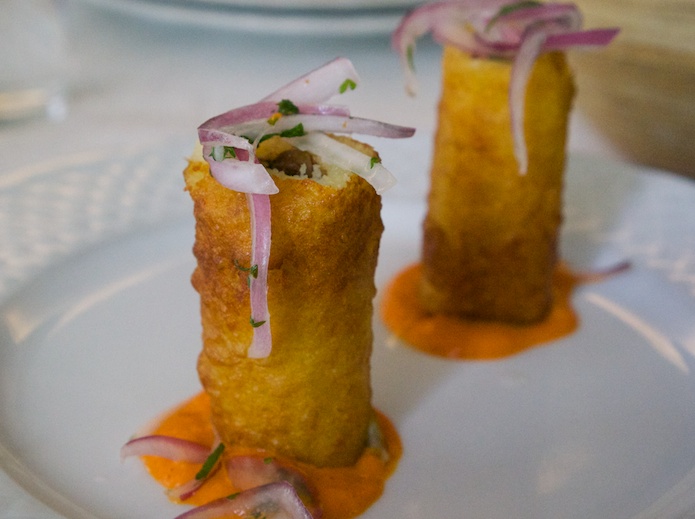
Stuffed potato cylinders
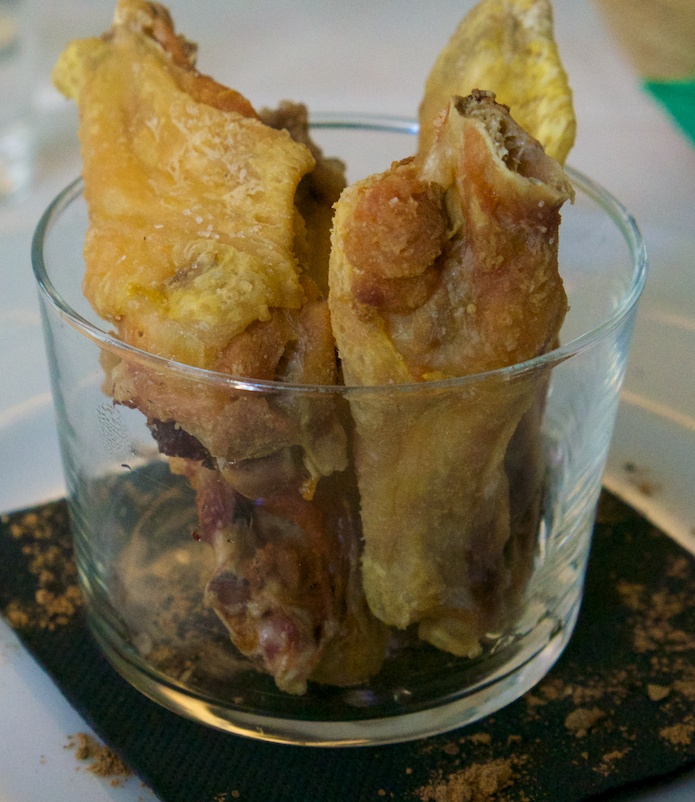
Fried duck

Layered banana cake and cream
Some of the courses were great (my favourite was probably the dessert), some were quite average (the potato cylinders were’t spectacular), however I cannot doubt its value for money. Unfortunately the day was somewhat spoiled when my friend had her phone stolen, right before our eyes. It took us both by surprise when a couple of guys walked in off the street and came to the table with a sheet of paper with something written in Spanish. He was waving it around and mumbling something (we assumed he was one of the many street beggars wanting some spare change), however, as we later realised, the paper was actually a clever tactic to hide his hands as he took the phone that was sitting on the corner of the table. Every travel guide warns of things like these in Spain, however we did not at all expect it in a cosy little restaurant outside of the busy city centre.
Dinner is probably the meal that threw me the most, mostly because of its timing. A usual dinner for me at home would be somewhere between 6 and 7pm, however this would be a very unusual time for dinner in Spain. Many restaurants didn’t even open until 8:30pm or 9pm, and people would continue coming through the doors to place their orders up until almost midnight. Besides that, though, dinner was generally a fun meal to have. We would sometimes to go a bar and start with a glass of wine, which would often come with a complementary tapa of some sort. If not, we would order a few small tapas to share. I’m not sure if the locals do it, but we would sometimes bar hop, to test the atmospheres at different locations. Some nights I probably over-ate, and others I was satisfied with just a little bit of food and a lot of wine, which brings me to the next notable point—wine is ridiculously cheap in Spain! I don’t think I ever paid much more than 2 or 3 Euros for a glass of wine. I didn’t really know much about what I was ordering, but in most cases it was very drinkable, and actually quite a nice wine.
In general though, Madrid is an amazing city for anybody interested in food travel. Even the department stores (El Corte Inglés) have floors filled from floor to roof with gourmet food products, and bars packed with people ordering tapas and wine (the basement of David Jones has nothing on it), and just about every second street has a “Museo de Jamón” store, which I guess is almost the Spanish equivalent of a fast food store (although there are also more well-known fast food joints, but give me a jamón roll any day). The markets are always packed with a great selection of fresh tomatoes and mushrooms, and the wine never ceases to flow.
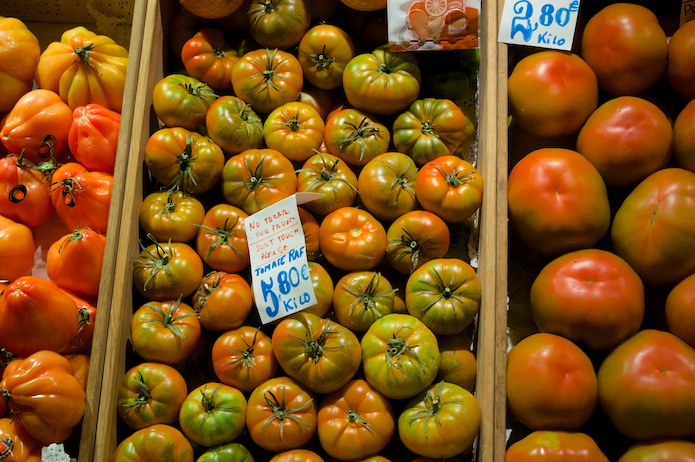
Fresh tomatoes on display at a market
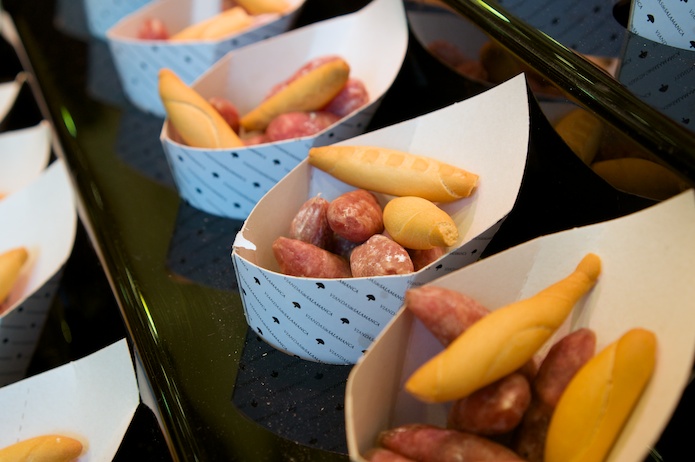
Cured meat and bread sticks at Museo de Jamon

Jamón bread rolls at Museo de Jamon
Madrid Food Tour
After spending a couple of days wandering and exploring, we thought it would be a good idea to get some guidance through a structured food tour of the city. On one bright and sunny morning we met Lauren, our tour guide, in the Plaza Mayor. To my surprise, she was from the USA and had been living in Spain for about five years (and had become fluent in the local language). Although not a native Spaniard, she certainly knew a lot about the food and the associated culture. She was obviously passionate about it and had done a lot of research into the history of Madrid and how it has shaped the food landscape that we see today.
The first stop of the tour was Chocolateria San Gines, which was packed full of people ordering their churros y chocolate, Spanish donuts with a mug of chocolate for dipping. Lauren ordered some for us, which we sat down to enjoy while she explained a bit about the Spanish food culture and the churros. Definitely worth a visit! Next up was another sweet treat, at Vicens. This shop specialises in turrón, or nougat, which are eggwhite and sugar based products usually eaten around Christmas time. Vicens has a huge range of products, from more traditional almond turrón, to less traditional things with all kinds of other delicious additions. There are a few similar shops dotted around the city, and they are worth visiting even just to have a look at the huge range of cool looking products.

A few of the many products at Vicens, Madrid
Shortly after we headed to the Mercado de San Miguel, a must-visit for any foodie venturing to Madrid. It hasn’t always been a food market, but today it plays home to a great number of food vendors, each selling their unique selection of tapas and wines by the glass (or bottle, if you plan on making a night of it). We started the tour of the market with a glass of Vermut de Roja with olives (it’s never too early for vermouth, right?). We then wandered around as Lauren pointed out and bought for us some of her favourite bite-sized snacks.
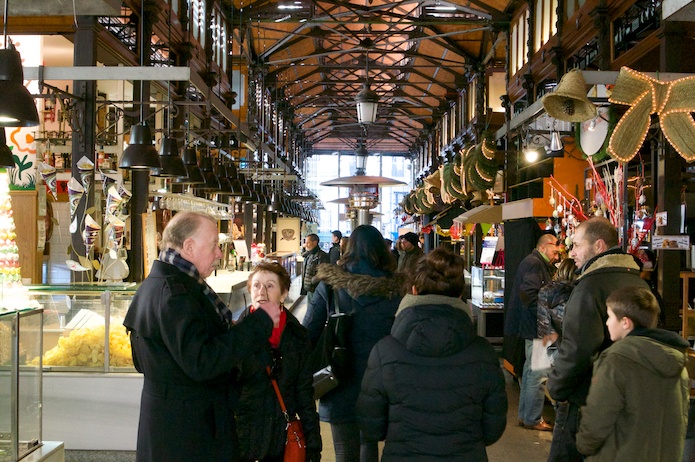
Inside the Mercado de San Miguel
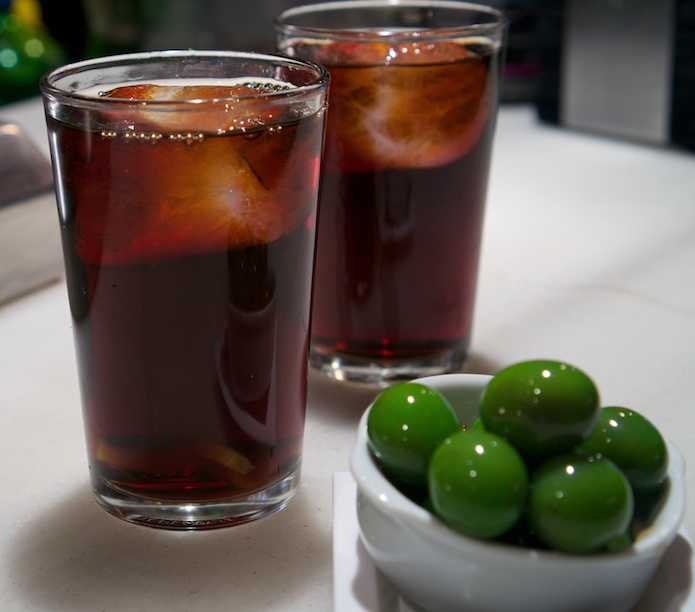
Vermut la Rioja at Mercado de San Miguel
We tried a lot of things, but the one that really stood out for me was the gulas, or fish processed to resemble baby eels, or angulas. Angulas are a very expensive and scarce delicacy, hence the use of a Japanese technique to create these faux-eels. I was hesitant at first, but that hesitation quickly subsided when I realised how seriously good they tasted. The best way to describe them is as spaghetti with a seafood dressing or sauce. I only wish that I had tried these sooner, and I wish I could find them again outside of Madrid. Don’t be put off by how these look, they are a must-try!
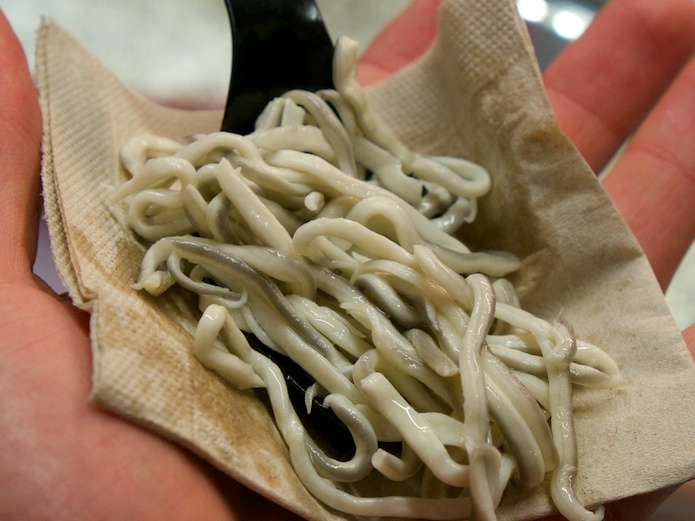
Gulas – mock angulas that taste and feel like spaghetti with a hint of seafood
After our tour of the market, we set off for a small restaurant that has been operating and serving great Spanish food since 1870. We first got a look in the kitchen of La Bola Taberna, where we saw first hand how they make their specialty meat and vegetable soup, which cooks in clay pots for hours over a charcoal fire. As expected, the soup was very homely and packed full of flavour. I think if I had one more day in Madrid I would have made a point on going back for a full lunch. Ah well, next time (and there will be a next time!).
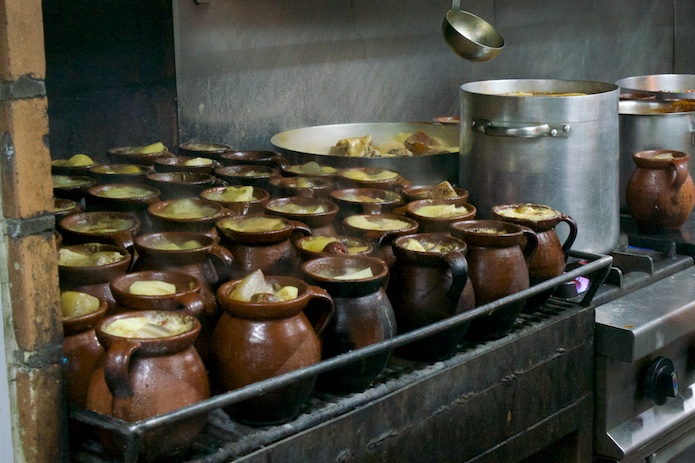
La Bola’s famous stew cooks in clay pots for hours over a charcoal fire
The next point on the itinerary took us to Ferpal, somewhat of a gourmet delicatessen with more jamón and cheese that I’ve probably ever seen in one place. This is the kind of place I could spend a lot of money if I’m not careful. I won’t deny the fact that the thought of buying a full leg of jamón crossed my mind, but then issues of logistics dampened that thought (I didn’t really want to be carrying it around for my whole trip, and as if Ryanair would have any of it without charging me an arm and a leg).
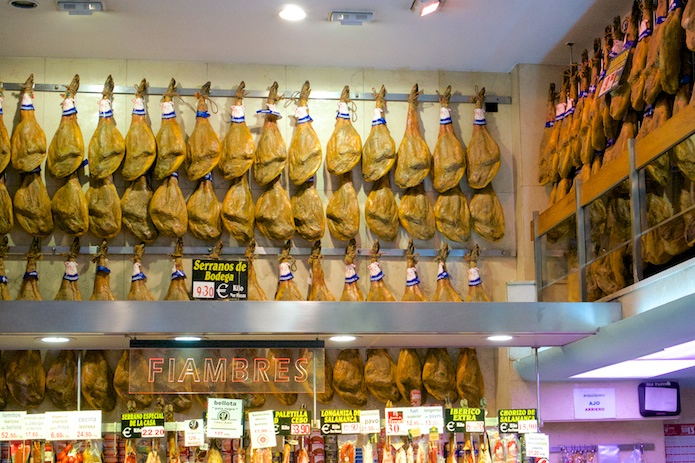
Jamón literally lining almost every wall of Ferpal
Jamón is grouped into different types according to the type of pig it came from and what type of lifestyle it lived. At the upper end of the jamón-meter is the ibérico de bellota, which is a free range pig that eats only acorns. Such a lifestyle affects the taste and texture of the product, which was evident when Lauren bought a tasting tray with a few different types. For me, jamón, and maybe some Manchego cheese, is the perfect accompaniment to a glass of red wine.
Although I was getting pretty full from the small bits and pieces that we had been eating, it was time for a sit-down lunch. We set off for Casa Toni to order a few different dishes to share. To drink we had a tinto de verano (literally summer red wine), a beverage of red wine and carbonated lemonade consumed regularly in Spain. The first dish was a calamari sandwich, which I thought was a very weird concept, however it is very common in Madrid. It is literally crumbed and fried calamari in a bread roll, and tastes exactly as you would expect.
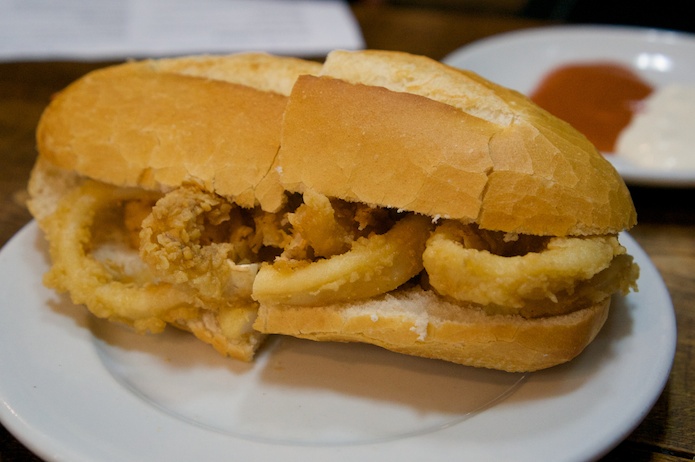
Breaded calamari…in bread. Peculiar but satisfying.
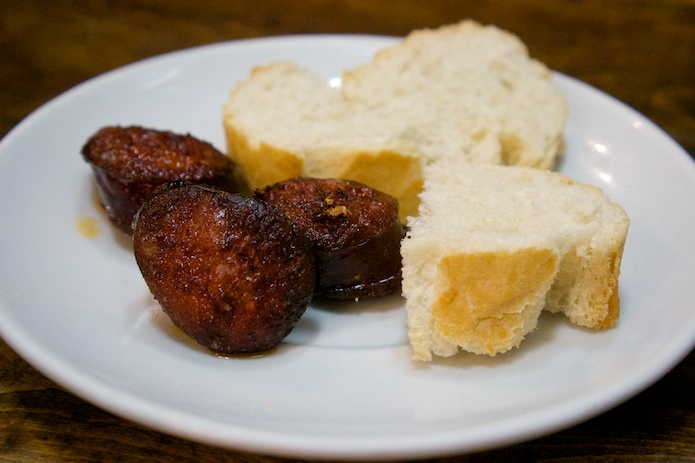
Chorizo and bread at Casa Toni
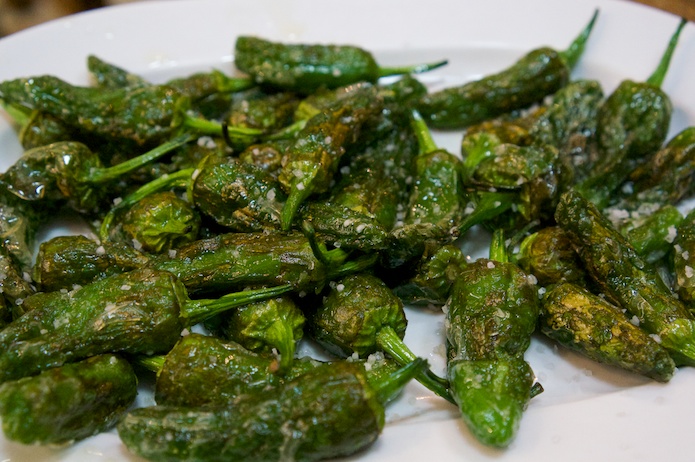
Pimentos de Padrón – A little bit bitter and a little bit salty, and very addictive.
The calamari sandwich was followed by a few other bits and pieces, so by this stage I was feeling very content (but that will never stop me from trying more). The tour finished with a visit to a large pastry shop, filled with all things sweet. Turrón, croissants, cakes, custards, meringues, and so much more. I had a tocino de cielo, a very rich and very sweet little egg yolk custard.
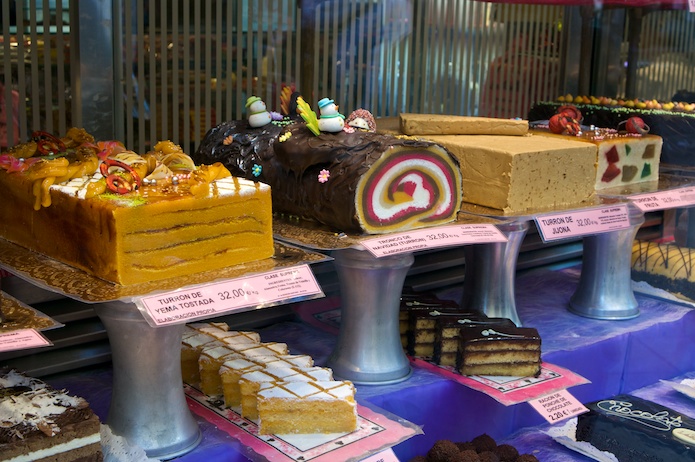
The final, and sweetest, stop of the tour
At the end of the tour we parted ways with Lauren, and she sent us an email with some great eating suggestions for Madrid and other Spanish cities. This turned out to be of great value as we worked through every place on the list in Seville, and most of the recommendations for Barcelona. Sometimes I am a little skeptical of lists of “must visit” food locations, however the lists provided by Madrid Food Tours were not at all disappointing, and they really helped us to “discover” other cities, by taking us to both modern and innovative eateries, and also to more traditional places where the locals go.
To anybody interested in seeing the food culture side of things in Madrid, I absolutely recommend the tour. It is a great way not just to try different things that you may not have tried otherwise, but also to learn a bit about the city in general. The whole tour is done on foot, so it is perfect for getting a sense of the size of the city centre and some of its different areas in the first few days of a trip to Madrid. Tours can be booked through the Madrid Food Tour website.
The Language
I didn’t try learning any Spanish at all before flying into Madrid, partly because I didn’t have time, and partly because I wanted to experience what it was like to be immersed in an environment of people speaking an unfamiliar language (although not totally unfamiliar, given that Spanish is very similar in some regards to Italian). I knew that Spain wasn’t exactly renowned for being a highly anglophone country, and it didn’t take me long to realise that learning some basic Spanish can go a very long way. If I was to recommend just one single phrase for tourists going to Spain, it would be
No hablo Español – I don’t speak Spanish
Seriously, learn it! (the “h” on hablo is not pronounced). Whenever I entered a shop, a restaurant, a bar, or was just walking along the streets, people would assume that I could understand Spanish (I was in Spain, after all, so it’s a fair assumption), and would proceed talking to me at a native pace. Sometimes they would quickly realise (probably by the blank look on my face) that I had no idea what they were saying, and other times I needed to stop them by saying “no hablo Español”. In some cases they would start talking in English, however in many cases we would end up trying to communicate with hand actions and my very limited knowledge of Spanish (which grew immensely over the course of my time in Spain).
Many of the restaurants had waiters that spoke some English, so ordering was easy most of the time. In fact, many of the restaurants even had menus translated into English to accommodate tourists. There are of course some places that don’t cater very well for English speaking tourist, so ordering often involved pointing to things on the menu and waiving my wallet to signal I was ready to pay. There are a few phrases that I found very helpful though (I didn’t make much of an effort to check the grammar, so there may be slight errors, however I was always understood when I used these):
Hay una lista de vinos? – Is there a wine list?
Una copa de agua/vino – A glass of water/wine
La cuenta por favor – The bill please
Vino tinto/blanco/rosado – Red/white/rosé wine
Un café con leche y un croissant – A coffee with milk and a croissant
Esto – This (as I pointed at something that I wanted to buy)
I would also recommend learning some numbers, because numbers always come in handy. I think learning the numbers up to 100 should be sufficient, especially for the purpose of dealing with money (100 may seem a lot of numbers to remember, however Spanish is similar to English in that the number system is quite structured i.e. If you know 5, and you know 20, you pretty much just say them together to say 25. It is easy enough to get by without numbers, though, because they can easily be written on a piece of paper, or indicated by holding up fingers.
Of course it is possible to get by without ever using a word of Spanish, however even a little bit goes a long way to enhancing the experience. About one day into my stay in Madrid I downloaded a couple of Spanish/English dictionary apps to my iPhone (all useable offline), which helped immensely in asking for things that I didn’t know the word for, and translating signs and notes that were not translated into English.
Madrid is a great city, and is definitely worth at least one visit. I feel as though I only managed to scratch the surface of what the city has to offer, but I will definitely be back in the future at some point. If I was to summarise my recommendations in a list of three, they would be:
- Eat lots of manchego and jamón, and drink lots of wine.
- Learn some basic Spanish, it will go a long way.
- Explore the side streets and alleys. The best food is not necessarily where the big crowds are.
Leave A Comment